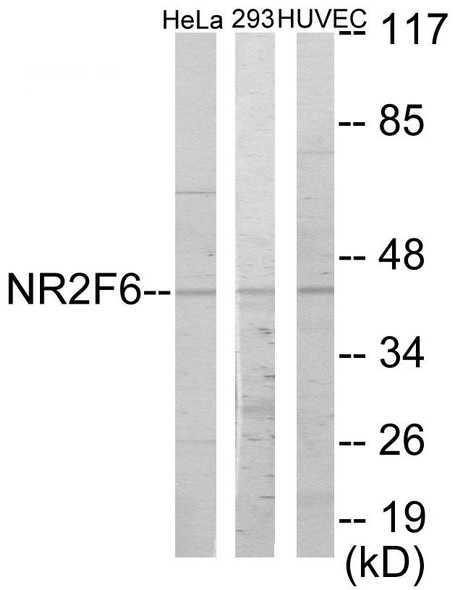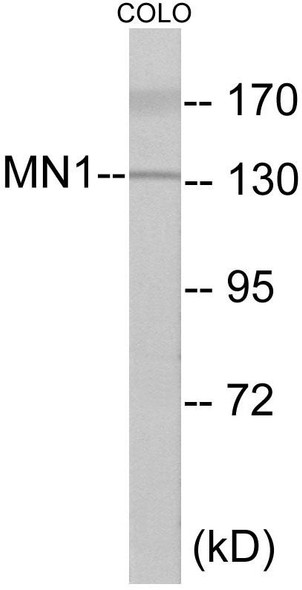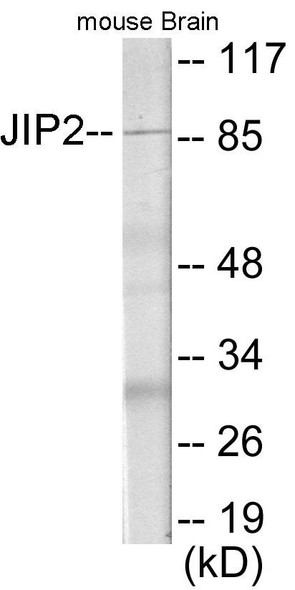ES8L1 Colorimetric Cell-Based ELISA (CBCAB01163)
- SKU:
- CBCAB01163
- Product Type:
- ELISA Kit
- ELISA Type:
- Cell Based
- Reactivity:
- Human
- Mouse
- Detection Method:
- Colorimetric
Description
ES8L1 Colorimetric Cell-Based ELISA
The ES8L1 Colorimetric Cell-Based ELISA Kit offered by Assay Genie is a cutting-edge assay designed for the detection of a specific cellular marker in a wide range of samples including human serum, plasma, and cell culture supernatants. This kit provides researchers with a highly sensitive and specific tool for accurately measuring levels of the target marker, allowing for reliable and reproducible results.The ES8L1 Colorimetric Cell-Based ELISA Kit is ideal for studying cellular processes and pathways, as well as for investigating the effectiveness of potential therapeutic interventions.
With its user-friendly protocol and high-performance reagents, this kit is a valuable asset for any laboratory looking to advance their research in cell biology, immunology, and drug discovery.Don't miss out on the opportunity to elevate your scientific investigations with the ES8L1 Colorimetric Cell-Based ELISA Kit from Assay Genie. Order yours today and unlock new insights into cellular function and disease mechanisms.
| Product Name: | ES8L1 Colorimetric Cell-Based ELISA |
| Product Code: | CBCAB01163 |
| ELISA Type: | Cell-Based |
| Target: | ES8L1 |
| Reactivity: | Human, Mouse |
| Dynamic Range: | > 5000 Cells |
| Detection Method: | Colorimetric 450 nmStorage/Stability:4°C/6 Months |
| Format: | 96-Well Microplate |
The ES8L1 Colorimetric Cell-Based ELISA Kit is a convenient, lysate-free, high throughput and sensitive assay kit that can detect ES8L1 protein expression profile in cells. The kit can be used for measuring the relative amounts of ES8L1 in cultured cells as well as screening for the effects that various treatments, inhibitors (ie siRNA or chemicals), or activators have on ES8L1.
Qualitative determination of ES8L1 concentration is achieved by an indirect ELISA format. In essence, ES8L1 is captured by ES8L1-specific primary antibodies while the HRP-conjugated secondary antibodies bind the Fc region of the primary antibody. Through this binding, the HRP enzyme conjugated to the secondary antibody can catalyze a colorimetric reaction upon substrate addition. Due to the qualitative nature of the Cell-Based ELISA, multiple normalization methods are needed:
| 1. | A monoclonal antibody specific for human GAPDH is included to serve as an internal positive control in normalizing the target absorbance values. |
| 2. | Following the colorimetric measurement of HRP activity via substrate addition, the Crystal Violet whole-cell staining method may be used to determine cell density. After staining, the results can be analysed by normalizing the absorbance values to cell amounts, by which the plating difference can be adjusted. |
| Database Information: | Gene ID: 54869, UniProt ID: Q8TE68, OMIM: 0, Unigene: Hs.438862 |
| Gene Symbol: | ES8L1 |
| Sub Type: | None |
| UniProt Protein Function: | EPS8L1: Stimulates guanine exchange activity of SOS1. May play a role in membrane ruffling and remodeling of the actin cytoskeleton. Belongs to the EPS8 family. 4 isoforms of the human protein are produced by alternative splicing. |
| UniProt Protein Details: | Protein type:Adaptor/scaffold Chromosomal Location of Human Ortholog: 19q13.42 Cellular Component: cytoplasm; protein complex Molecular Function:actin binding; protein binding; Rac guanyl-nucleotide exchange factor activity; Rho guanyl-nucleotide exchange factor activity; T cell receptor binding Biological Process: regulation of Rho protein signal transduction; Rho protein signal transduction |
| NCBI Summary: | This gene encodes a protein that is related to epidermal growth factor receptor pathway substrate 8 (EPS8), a substrate for the epidermal growth factor receptor. The function of this protein is unknown. At least two alternatively spliced transcript variants encoding different isoforms have been found for this gene. [provided by RefSeq, Jul 2008] |
| UniProt Code: | Q8TE68 |
| NCBI GenInfo Identifier: | 296439363 |
| NCBI Gene ID: | 54869 |
| NCBI Accession: | Q8TE68.3 |
| UniProt Secondary Accession: | Q8TE68,Q71RE2, Q8NC10, Q96BB7, Q9BSQ2, Q9GZQ2, Q9NXH0 |
| UniProt Related Accession: | Q8TE68 |
| Molecular Weight: | 55,807 Da |
| NCBI Full Name: | Epidermal growth factor receptor kinase substrate 8-like protein 1 |
| NCBI Synonym Full Names: | EPS8 like 1 |
| NCBI Official Symbol: | EPS8L1 |
| NCBI Official Synonym Symbols: | DRC3; EPS8R1; PP10566 |
| NCBI Protein Information: | epidermal growth factor receptor kinase substrate 8-like protein 1 |
| UniProt Protein Name: | Epidermal growth factor receptor kinase substrate 8-like protein 1 |
| UniProt Synonym Protein Names: | Epidermal growth factor receptor pathway substrate 8-related protein 1; EPS8-related protein 1 |
| Protein Family: | Epidermal growth factor receptor kinase substrate 8-like protein |
| UniProt Gene Name: | EPS8L1 |
| UniProt Entry Name: | ES8L1_HUMAN |
| Component | Quantity |
| 96-Well Cell Culture Clear-Bottom Microplate | 2 plates |
| 10X TBS | 24 mL |
| Quenching Buffer | 24 mL |
| Blocking Buffer | 50 mL |
| 15X Wash Buffer | 50 mL |
| Primary Antibody Diluent | 12 mL |
| 100x Anti-Phospho Target Antibody | 60 µL |
| 100x Anti-Target Antibody | 60 µL |
| Anti-GAPDH Antibody | 60 µL |
| HRP-Conjugated Anti-Rabbit IgG Antibody | 12 mL |
| HRP-Conjugated Anti-Mouse IgG Antibody | 12 mL |
| SDS Solution | 12 mL |
| Stop Solution | 24 mL |
| Ready-to-Use Substrate | 12 mL |
| Crystal Violet Solution | 12 mL |
| Adhesive Plate Seals | 2 seals |
The following materials and/or equipment are NOT provided in this kit but are necessary to successfully conduct the experiment:
- Microplate reader able to measure absorbance at 450 nm and/or 595 nm for Crystal Violet Cell Staining (Optional)
- Micropipettes with capability of measuring volumes ranging from 1 µL to 1 ml
- 37% formaldehyde (Sigma Cat# F-8775) or formaldehyde from other sources
- Squirt bottle, manifold dispenser, multichannel pipette reservoir or automated microplate washer
- Graph paper or computer software capable of generating or displaying logarithmic functions
- Absorbent papers or vacuum aspirator
- Test tubes or microfuge tubes capable of storing ≥1 ml
- Poly-L-Lysine (Sigma Cat# P4832 for suspension cells)
- Orbital shaker (optional)
- Deionized or sterile water
*Note: Protocols are specific to each batch/lot. For the correct instructions please follow the protocol included in your kit.
| Step | Procedure |
| 1. | Seed 200 µL of 20,000 adherent cells in culture medium in each well of a 96-well plate. The plates included in the kit are sterile and treated for cell culture. For suspension cells and loosely attached cells, coat the plates with 100 µL of 10 µg/ml Poly-L-Lysine (not included) to each well of a 96-well plate for 30 minutes at 37°C prior to adding cells. |
| 2. | Incubate the cells for overnight at 37°C, 5% CO2. |
| 3. | Treat the cells as desired. |
| 4. | Remove the cell culture medium and rinse with 200 µL of 1x TBS, twice. |
| 5. | Fix the cells by incubating with 100 µL of Fixing Solution for 20 minutes at room temperature. The 4% formaldehyde is used for adherent cells and 8% formaldehyde is used for suspension cells and loosely attached cells. |
| 6. | Remove the Fixing Solution and wash the plate 3 times with 200 µL 1x Wash Buffer for five minutes each time with gentle shaking on the orbital shaker. The plate can be stored at 4°C for a week. |
| 7. | Add 100 µL of Quenching Buffer and incubate for 20 minutes at room temperature. |
| 8. | Wash the plate 3 times with 1x Wash Buffer for 5 minutes each time. |
| 9. | Add 200 µL of Blocking Buffer and incubate for 1 hour at room temperature. |
| 10. | Wash 3 times with 200 µL of 1x Wash Buffer for 5 minutes each time. |
| 11. | Add 50 µL of 1x primary antibodies (Anti-ES8L1 Antibody and/or Anti-GAPDH Antibody) to the corresponding wells, cover with Parafilm and incubate for 16 hours (overnight) at 4°C. If the target expression is known to be high, incubate for 2 hours at room temperature. |
| 12. | Wash 3 times with 200 µL of 1x Wash Buffer for 5 minutes each time. |
| 13. | Add 50 µL of 1x secondary antibodies (HRP-Conjugated AntiRabbit IgG Antibody or HRP-Conjugated Anti-Mouse IgG Antibody) to corresponding wells and incubate for 1.5 hours at room temperature. |
| 14. | Wash 3 times with 200 µL of 1x Wash Buffer for 5 minutes each time. |
| 15. | Add 50 µL of Ready-to-Use Substrate to each well and incubate for 30 minutes at room temperature in the dark. |
| 16. | Add 50 µL of Stop Solution to each well and read OD at 450 nm immediately using the microplate reader. |
(Additional Crystal Violet staining may be performed if desired – details of this may be found in the kit technical manual.)






